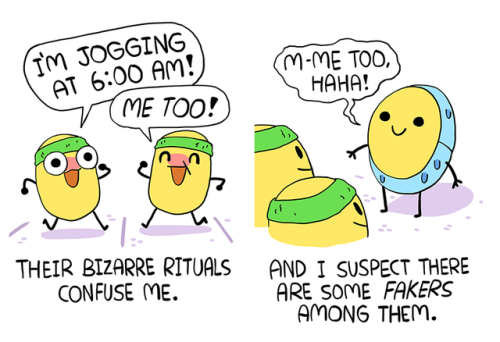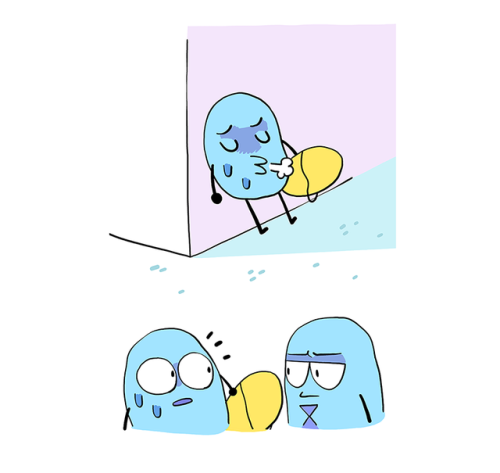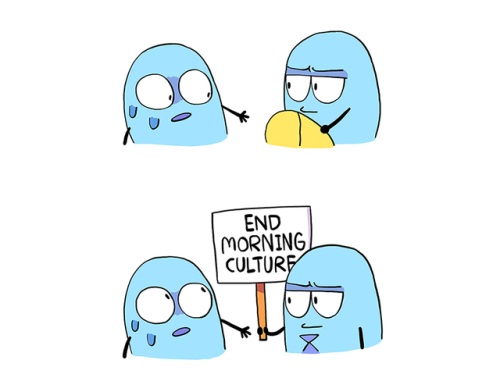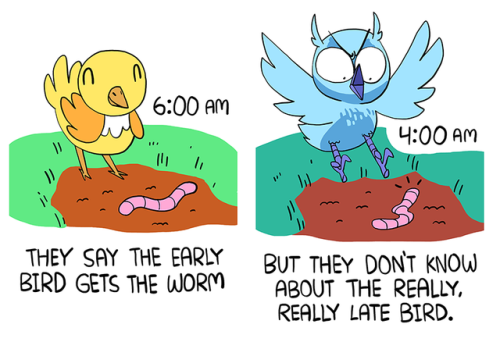Could You Explain He Difference Between Self Defense And A Fight. Because I Hear People Mix These Terms
Could you explain he difference between self defense and a fight. Because I hear people mix these terms up all the time.
In a fight, both fighters are aware that they are, in fact, in a fight, and the goal is to win by either making the opponent give up, knocking them out, or, if fighting in a ring or cage, by decision from judges. Fighting is usually done under a set of rules, too, whether that’s from an organization you’re fighting under, or a set of rules agreed to by the two fighters. Fighting in this sense is also done using mostly punching and kicking, joint locks and throws in a straight forward manner, as in, both are playing a game, strategizing, looking for openings to strike. In fighting, if it’s point sparring, speed is more important than technique and/or power. In fighting in a cage or a ring, a combination of all three things is needed. This is what you’d call a balanced fighter.
In self defense, the martial artist is not expecting to fight, but rather to avoid fighting altogether. This means awareness of self and surroundings is the main point in self defense. If anything suspicious is noticed, the martial artist moves away from it to avoid getting caught in a situation. If needed, the martial artist may call the proper authorities to come and help. In case of an emergency, say a fire, the martial artist has the training to remain calm and may be able to lead others to safety. If faced with a fight, it will usually happen by surprise. And the goal becomes either:
- If you’re alone - To defeat your opponent as fast as possible, or to escape unhurt. If you have to fight, it should be because it simply cannot be avoided, and in defeating your opponent, the martial artist has four levels of technique:
1. Infliction of pain (e.g. A joint lock)
2. Temporary incapacitation (e.g. A strike to the groin)
3. Permanent incapacitation (e.g. Breaking a knee)
4. Kill
Part of the goal when fighting in self defense is to use the lowest level of technique possible, and only increase if the opponent is persistent with his attack, or if the opponent presents a serious threat.
- If you’re with friends or loved ones - To protect them by positioning yourself between them and the assailant if possible. If not, to attract the attention of the assailant towards you. This can be done by, first and foremost, remaining calm, and talking to the assailant yourself, keeping him on you as much as possible. If you can fight, and you decide to do it, you have to make sure you can take down the opponent in seconds (keeping to whichever level of technique is appropriate), as you must keep your loved ones safe and as out of the way as possible. However, if you’re not 100% sure you can take down your assailant without getting your friends, loved ones, or yourself hurt, then it’s better to cooperate (e.g. if all they want is your money, and you see no chance of getting out the situation for fear of the safety of your loved ones, then just give your money away and hope the assailant leaves. Situation like this, chances are, they aren’t looking to hurt anyone and just want the money or your valuables.)
Your life and that of your loved ones is more important than any material possession.
In self defense, technique execution, coordination and a fair level of power are more important, and though speed balances everything out, reaction time and the ability to “read your attackers move” or “see ahead” is more important than speed.
In a fight, you have an OPPONENT. (someone who competes against or fights another in a contest, game, or argument; a rival or adversary, a contender, a challenger, a fellow contestant.)
In self defense, you have an ASSAILANT. (a person who physically attacks another; an attacker, a mugger, an assaulter.)
In each situation, you must act accordingly.
More Posts from Aedysa and Others
Character Analysis: Mitsuhide
Warning: Spoilers ahead.
It’s pretty long so I threw this whole post under a cut. This is my personal views on Mitsuhide. You are free to disagree with me. I’m still getting to know him and how he really is. I thought I’d share my thoughts on Mitsuhide since his route is coming out soon.
Keep reading
Plot Question Tag Game
From my other sideblog @sageandwizard
I would like to thank @practising-writer for tagging.
Rules: Summarize your WIP in one (possibly teaser-y) question
Arashi (嵐):
Would you chose your duty over everything else or your bonds despite anything else?
Tagging @pseudofaux @frywen-babbles @dear-mrs-otome @reinasescape to take part!
“Everywhere you will find that the wealth of the wealthy springs from the poverty of the poor.”
— Peter Kropotkin, The Conquest of Bread
Types of antagonists: Creating riveting opponents
FROM: https://www.nownovel.com/blog/types-of-antagonists/
There are many types of antagonists. Sometimes in a story a primary antagonist starts out as a close ally. Characters who oppose your main character’s goals aren’t necessarily ‘bad’, yet they serve a primary function: Standing between another character and their destiny. Here are 5 types of antagonists with examples and points to remember:
1. The malevolent villain
The standard malevolent villain is particularly common in the fantasy genre, yet they appear in diverse stories. The character Iago from Shakespeare’s tragedy Othello is a classic example. Iago stokes his military superior Othello’s jealousy until Othello murders his wife, suspecting her of infidelity thanks to Iago’s lies and manipulations.
Writing a malevolent antagonist who has an appetite for destruction has pitfalls. A villain who does bad for ‘evil’s sake’ could lack development and motivations that make characters believable.
To create a believable straight-up villain:
Brainstorm reasons for their actions. Sauron in Tolkien’s Lord of the Rings cycle, for example, has lost physical form and craves restored power
Explain the origin of their corruption. Tolkien shows Sauron’s rise and fall in a prologue. Over the course of her Harry Potter series (particularly the second book), J.K. Rowling shows Lord Voldemort’s descent from being Tom Riddle to the most notorious and feared member of the wizard community
Give them vulnerabilities or weaknesses. These don’t have to be emotional or physical. They could be strategic. For example, a villain who surrounds themselves with greedy henchmen is more vulnerable to betrayal if their supporters are easily swayed by material rewards
The next type of antagonist is often surprising, as we don’t typically expect strong opposition from allies or friends:
2. The ally-antagonist
It’s particularly surprising in a story when an ally turns antagonist.
For example, in the first volume of Tolkien’s fantasy cycle, The Fellowship of the Ring, the warrior Boromir joins the main characters’ quest to destroy the One Ring. Yet Boromir disagrees with destroying it, arguing with his companions that they could use its mystical power to defeat the villain Sauron, or restore the city of Gondor. When Boromir tries to take the ring from Frodo by force, its a shocking moment where a morally complex character crosses the line from ally to antagonist.
The ally-antagonist is a useful character because they show how easy it is for a ‘good’ character to make a regrettable choice. In the wider context of Tolkien’s story, it reinforces the idea that doing good is a conscious choice and not always an easy one. It also adds secondary conflicts that illustratethe ring’s corrupting power and danger.
When writing an ally-antagonist, remember to:
Show the flaws in their personality that explain their behaviour. Boromir is headstrong and, as a warrior, used to fighting for his ideals and using force
Give them compelling motivations for their choices.Boromir thinks the ring’s dark power could be harnessed for good
Ally-antagonists add shades of grey in the ‘black and white’ of ‘good vs evil’. They show us how easily people can take destructive paths that result in negative outcomes. Some also refer to this type of antagonist as a ‘hero antagonist since they may be motivated by noble ideals. Boromir’s desire to uplift his city fits this description. The nobility or virtue of this underlying wish makes his actions more tragic, since it appears his intentions are good.
3. The interfering authority figure
The function of an antagonist, in terms of plot, is to stand between a primary character and their main goals.
An interfering authority figure is thus useful for creating challenges and complications that make life harder for your protagonist.
Depending on the interfering authority figure you create, their broader story role could be:
To show something about the nature of power and authority in your book’s society (for example, how little power people have faced with totalitarian leadership)
To show cultural values or practices that stand between your character and their goals (for example, traditionalist parents who oppose a ‘love match’ marriage in romance)
A good example of this type of antagonist is Allie’s mother in Nicholas Sparks’ romance novel The Notebook. Allie is from a wealthy family and her love interest Noah works as a labourer. Because of her class-conscious and controlling nature, Allie’s mother hides love letters from Noah to Allie.
This plot point shows how the interfering authority antagonist can make selfish or value-driven choices that get in your protagonist’s way.
Another example of an interfering authority antagonist would be a border patrol officer who delays characters. Perhaps they are a power-drunk bureaucrat and intentionally delay your protagonists just because they can. This would be a useful secondary antagonist if your characters’ primary goal at this moment is making it to a meeting or other event on time.
When writing this type of antagonist, ask:
What is their reason for interfering? In Allie’s mother’s case, it’s a controlling nature coupled with class snobbery
How will this character’s actions impact your protagonist and create complications in the way of their goal (e.g. being with their lover or making a vital meeting on time)?
4. The force of nature
One of the few types of antagonists that don’t need a clear motivation is the ‘force of nature’.
If you think of disaster novels and films, it’s the unpredictable shark that attacks in Jaws. Some call this antagonist type the ‘beast’, but it doesn’t have to be a living or sentient being. In a survival story, this antagonist could be something with as little intent or motive as a treacherous mountain range your character climbs.
This type of antagonist does not have a character arc, in the sense of (for example) a backstory explaining how they became corrupt. Yet you can still include change and vary this type of antagonist to create tension and unpredictability.
To create an interesting and gripping ‘irrational force of destruction’:
Make it unpredictable. For example, on a tough mountain ascent, where your antagonist is the environment itself, perhaps clouds roll in obstructing vision and making the going tougher
Vary the intensity of opposition. On a tricky mountain ascent, create the occasional surprise rockfall or relief-bringing plateau
Make the danger real. A shark or other antagonist is only fearful and tension-inducing if you show the repercussions of not overcoming them. Maybe someone falls; maybe someone has their leg bitten off
Although not entirely an antagonist in the sense of a separate oppoenent, a character’s ‘worse self’ is also a useful source of tension and opposition:
5. The inner saboteur
In a story where a character’s main struggle is an internal struggle (e.g. drug addiction), the protagonist and antagonist are rolled into one, in a sense. Rather than the main conflict being external, the conflict takes place within a single character.
The danger of this type of antagonistic situation is that your character’s thoughts could dominate the narration, without as much exchange with others. If your character’s main opponent is their own self, remember to:
Show destructive behaviour in action. Instead of having an addict constantly think about their addiction, show how they fight it and sometimes fail. Perhaps they might visit a street hoping to score a fix but end up empty-handed, for example
Think about the origins of their self-destructive choices.What motivated your character originally to embark on a path of self-destruction?
Include secondary antagonists who add external conflict to the mix. An addict character, for example, may have uncomfortable brushes with law enforcement or a dangerous dealer
There are many types of antagonist that bring gripping conflict and opposition to a story. Whichever type you create, make sure you realize each opponent with as much detail and thought as you would a protagonist.
Source: https://www.nownovel.com/blog/types-of-antagonists/
GOOD LORD !!😨😨😨!!

someone has waited their entire career to use this headline




Aww...Hide is such a tease....WAIT! THIS ISN'T HIS ROUTE!! 😬😬





You know…if I didn’t know better Lady Yoshihime can be the worst evil LOVE RIVAL for Lord Kojuro’s affection until you knew the truth behind that woman.
-
 qupritsuvwix reblogged this · 3 years ago
qupritsuvwix reblogged this · 3 years ago -
 acezero0 liked this · 4 years ago
acezero0 liked this · 4 years ago -
 squeackygee reblogged this · 4 years ago
squeackygee reblogged this · 4 years ago -
 squeackygee liked this · 4 years ago
squeackygee liked this · 4 years ago -
 shodaime1 liked this · 5 years ago
shodaime1 liked this · 5 years ago -
 kilodelta reblogged this · 5 years ago
kilodelta reblogged this · 5 years ago -
 kilodelta liked this · 5 years ago
kilodelta liked this · 5 years ago -
 lairofsentinel reblogged this · 5 years ago
lairofsentinel reblogged this · 5 years ago -
 twobellsilence liked this · 5 years ago
twobellsilence liked this · 5 years ago -
 tsuirakukumo reblogged this · 5 years ago
tsuirakukumo reblogged this · 5 years ago -
 duplicitous-nature reblogged this · 5 years ago
duplicitous-nature reblogged this · 5 years ago -
 duplicitous-nature liked this · 5 years ago
duplicitous-nature liked this · 5 years ago -
 whatifweallweresquirrels reblogged this · 5 years ago
whatifweallweresquirrels reblogged this · 5 years ago -
 uaintthickurfat reblogged this · 6 years ago
uaintthickurfat reblogged this · 6 years ago -
 celestialmeats liked this · 6 years ago
celestialmeats liked this · 6 years ago -
 thethinkingbox liked this · 6 years ago
thethinkingbox liked this · 6 years ago -
 sageandwizard reblogged this · 6 years ago
sageandwizard reblogged this · 6 years ago -
 aedysa reblogged this · 6 years ago
aedysa reblogged this · 6 years ago -
 jaberwonky reblogged this · 6 years ago
jaberwonky reblogged this · 6 years ago -
 jaberwonky liked this · 6 years ago
jaberwonky liked this · 6 years ago -
 hannahkchristian reblogged this · 6 years ago
hannahkchristian reblogged this · 6 years ago -
 just-one-part-of-the-past liked this · 6 years ago
just-one-part-of-the-past liked this · 6 years ago -
 bookwyrm99 liked this · 6 years ago
bookwyrm99 liked this · 6 years ago -
 i-aim-to-misbehave liked this · 6 years ago
i-aim-to-misbehave liked this · 6 years ago -
 shaped-by-karate reblogged this · 6 years ago
shaped-by-karate reblogged this · 6 years ago -
 princess-ellax liked this · 6 years ago
princess-ellax liked this · 6 years ago -
 ryototsukaitwoswords reblogged this · 6 years ago
ryototsukaitwoswords reblogged this · 6 years ago -
 ryototsukaitwoswords liked this · 6 years ago
ryototsukaitwoswords liked this · 6 years ago -
 sofiachronicles liked this · 6 years ago
sofiachronicles liked this · 6 years ago -
 taekwondohyeah reblogged this · 6 years ago
taekwondohyeah reblogged this · 6 years ago -
 nyano liked this · 6 years ago
nyano liked this · 6 years ago -
 nihilism-or-go-home liked this · 6 years ago
nihilism-or-go-home liked this · 6 years ago -
 riadelva liked this · 6 years ago
riadelva liked this · 6 years ago -
 calllmeafighter-blog reblogged this · 6 years ago
calllmeafighter-blog reblogged this · 6 years ago -
 iamapiratecupcake reblogged this · 6 years ago
iamapiratecupcake reblogged this · 6 years ago -
 biglace53 reblogged this · 6 years ago
biglace53 reblogged this · 6 years ago -
 01spaniard liked this · 6 years ago
01spaniard liked this · 6 years ago -
 laughingdragonheart reblogged this · 6 years ago
laughingdragonheart reblogged this · 6 years ago -
 laughingdragonheart liked this · 6 years ago
laughingdragonheart liked this · 6 years ago -
 samuelcarveraccidentman reblogged this · 6 years ago
samuelcarveraccidentman reblogged this · 6 years ago -
 uaintthickurfat liked this · 6 years ago
uaintthickurfat liked this · 6 years ago -
 nicniknote reblogged this · 6 years ago
nicniknote reblogged this · 6 years ago -
 nicniknote liked this · 6 years ago
nicniknote liked this · 6 years ago









